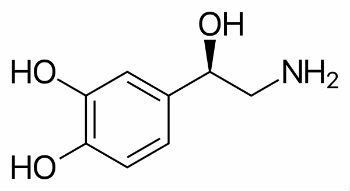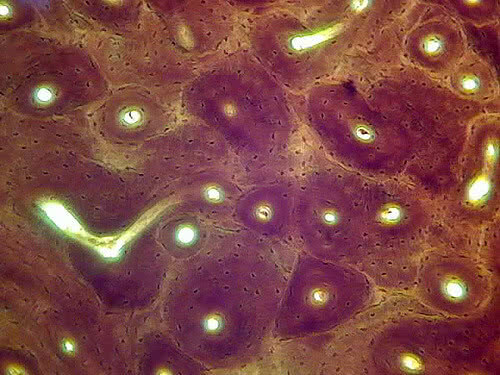Test your knowledge with the 10 questions next about Kingdom Plantae. Check the comments after the feedback to clear your doubts on the topic.
question 1
The Plantae Kingdom or Plant Kingdom is made up of organisms
a) Heterotrophs and photosynthesizers
b) Autotrophs and chlorophylls
c) eukaryotes and unicellular
d) Avascular and chemosynthetic
Correct alternative: b) Autotrophs and chlorophylls.
The organisms that are grouped in the Plant Kingdom have characteristics such as:
- They are autotrophs, as they produce their own food;
- They are chlorophyll beings and the chlorophyll pigment is associated with the photosynthesis process carried out by these beings to obtain food and energy;
- Organisms are multicellular and their cells are eukaryotic, that is, they have an individualized nucleus because it is delimited by a nuclear membrane.
question 2
Correctly relate the parts of a plant (column 1) with their respective functions (column 2).
I. Sheets
II. Stalk
III. roots
IV. Flowers
v. fruits
( ) Absorption of substances
( ) Photosynthesis
( ) Reproduction
( ) Support
( ) Seed dispersion
The correct sequence is:
a) I, II, III, IV, V
b) V, IV, III, I, II
c) III, I, IV, II, V
d) V, IV, III, II, I
Correct alternative: c) III, I, IV, II, V.
(III) The roots are responsible for absorbing essential substances and fixing the plant in the soil.
(I) The sheets enable the processes of respiration, transpiration and photosynthesis by plants.
(IV) The flowers are responsible for reproduction and the fruits are usually the result of the development of the ovary after fertilization.
(II) The stalk It is responsible for the support of the plant and for its structure, the transport of substances occurs.
(You fruits guarantee the survival of the species through seed dispersal.
question 3
The sap conducting vessels are structures that allow the classification of plants into
a) Gymnosperms and angiosperms
b) Vascular and avascular
c) Photosynthetic and chemosynthetic
d) autotrophs and heterotrophs
Correct alternative: b) Vascular and avascular.
The Plant Kingdom is composed of organisms that have sap-conducting vessels and are called vascular plants. Examples are pteridophytes, gymnosperms and angiosperms.
Plants lacking these vessels are classified as avascular. Examples are algae and bryophytes.
The sap conducting vessels act in the transport of nutrients and other substances necessary for the development of plants.
question 4
About Kingdom Plantae it is correct to say that
I. Xylem is a plant tissue responsible for conducting raw sap.
II. Phloem is a structure responsible for conducting organic compounds.
III. Chloroplasts are organelles where photosynthesis takes place.
IV. The plant cell differs from the animal cell by the presence of a cell wall.
The statements are correct:
a) I and II
b) I, II and III
c) I, III and IV
d) All alternatives
Correct alternative: d) All alternatives.
I. CORRECT. Raw sap is made up of water and minerals. The xylem is the main responsible for the conduction of water in vascular plants.
II. CORRECT. Phloem is a plant tissue responsible for conducting the elaborate sap, which contains the organic compounds produced in the leaves through photosynthesis.
III. CORRECT. Chloroplasts are organelles present only in plant and algae cells. They have a green color due to the presence of chlorophyll and are responsible for carrying out photosynthesis.
IV. CORRECT. Plant cells form plant tissues and differ from animal cells in having, for example, a cell wall, chloroplasts and vacuoles.
question 5
Indicate which of the following is NOT a difference between gymnosperms and angiosperms.
a) The main characteristic of angiosperms is the production of fruits, structures absent in gymnosperms.
b) In gymnosperms the seeds are exposed, while in angiosperms the seeds are surrounded by the fruits.
c) The reproduction of the gymnosperm is sexual with pollination by the wind and the angiosperms are plants of asexual reproduction.
d) In gymnosperms the reproductive structure is called the strobilum and in angiosperms the reproductive structures are the flowers.
Correct alternative: c) The reproduction of the gymnosperm is sexual with pollination by the wind and the angiosperms are plants of asexual reproduction.
The structures that make up the angiosperms are: root, stem, flowers, fruits and seeds.
The structures that make up the gymnosperms are: root, stem, cone, also called strobilus, and seeds.
Strobiles are formed by modified leaves that are grouped together and form this reproductive structure of gymnosperms. These leaves are fertile and do not carry out photosynthesis.
Angiosperms and gymnosperms perform sexual reproduction.
In angiosperm reproduction, fertilization occurs with the presence of male pollen.
In the reproduction of gymnosperms, fertilization takes place in Organs female organs by pollen, which is produced by Organs male organs and transported with the help of nature through wind, rain, insects and birds.
question 6
Indicate which characteristics described below belong to the bryophyte (I) and pteridophyte (II) plants.
( ) They are vascular plants.
( ) They are avascular plants.
( ) Its structure is formed by root, stem and leaves.
( ) Its structure is formed by rhizoid, cauloid and phylloid.
( ) In the life cycle, the gametophytic phase is dominant.
( ) In the life cycle, the sporophytic phase is dominant.
The correct sequence is
a) I, II, I, II, I, II
b) I, I, II, II, II, I
c) II, I, II, I, I, II
d) II, I, II, I, II, I
Correct alternative: c) II, I, II, I, I, II.
At bryophytes are small plants avascular They usually live in humid environments. The main axis of the body is called stem, with thin structures such as blades, the phylloids, are structures that resemble leaves, and there are also structures that serve as anchors to the ground, the rhizoids.
In bryophytes, alternation of generations occurs: there is a phase gametophytic (forms gametes) that is haploid and more developed, and a sporophytic (forms spores) that is diploid and shorter.
At pteridophytes are plants vascular, that is, they have conductive tissues. O stalk it is the structure that supports the leaves and transports the sap. At roots They fix the plant and absorb water and mineral salts from the soil. At sheets are laminar with cells rich in chloroplasts, whose function is to carry out photosynthesis.
In pteridophytes, there is an alternation of generations in sexual reproduction, with the sporophyte (diploid phase) the lasting generation.
question 7
Carnivorous or insectivorous plants are a peculiar case of the Vegetal Kingdom, which usually capture insects and even small animals because
a) because of their evolutionary characteristics, this is the only way they can feed.
b) these beings are the biggest source of energy they need to carry out their activities.
c) they are heterotrophs and therefore need animals as a source of nutrition.
d) remove essential nutrients from animals for the production of chlorophyll, which will be used in the photosynthesis process.
Correct alternative: d) they remove essential nutrients from the animals for the production of chlorophyll, which will be used in the photosynthesis process.
Although carnivorous plants carry out photosynthesis, as they live in nutrient-poor soils, they seek to complement nutrition through the digestion of some small animals. For this, they usually capture insects and even small animals. The presence of a digestive enzyme allows the carnivorous plant to feed differently from other plants.
As they manage to survive in places where the presence of nutrients is low, in addition to photosynthesis, carnivorous plants feed on small animals to complement their food. In this way, they are autotrophs and when they need to, they are heterotrophs.
question 8
A tissue can be defined as the set of morphologically identical cells that perform the same function.
Plant tissues are divided into: _____________, responsible for plant growth, and _____________, which have specific functions, such as coating, filling, support and driving.
The fabrics that correctly fill in the empty spaces in the text are:
a) meristematic tissues and adult tissues
b) formation fabrics and differential fabrics
c) primary and secondary tissues
d) vascular and avascular tissues
Correct alternative: a) meristematic tissues and adult tissues.
Plant tissues are divided into: meristematic tissues, responsible for plant growth, and adult fabrics, which have specific functions, such as coating, filling, support and conduction.
Meristem is a plant tissue responsible for plant growth and the formation of other types of plant tissue. Primary meristematic tissue promotes plant height growth, while secondary meristematic tissue promotes thickness growth.
Adult or permanent tissues are differentiated and classified according to the function they perform. In this case, they can be coating, filling, support and conduction. Plants have covering fabrics to protect leaves, roots and stems. The covering tissues are the epidermis and periderm (suber, phellogen and phelloderm).
question 9
(UFF) This year the Botanical Garden of Rio de Janeiro completes 200 years of existence. It contains collections of more than 8,000 species of national plants and from various parts of the world. The Botanical Garden was expanded by 15,000m2 and the greenhouses for orchids, bromeliads, cacti and insectivorous plants were renovated. This last group of plants, also known as carnivorous plants, draws a lot of attention for being able to obtain nutrients from the animals they capture and digest. However, organisms of Kingdom Plantae are classified as autotrophs in terms of their nutrition.
Autotrophs are organisms that synthesize organic molecules from:
a) water and glucose
b) organic substances
c) inorganic substances
d) water, the2 and proteins
e) water, CO and proteins
Correct alternative: c) inorganic substances.
Photosynthesis is a photochemical process that consists of producing energy through sunlight and fixing carbon from the atmosphere.
It can be summarized as the process of transforming light energy into chemical energy. The term photosynthesis means synthesis by light.
Photosynthesis is a process that takes place inside the plant cell, from CO2 (carbon dioxide) and H2O (water), which are inorganic substances, as a way to produce glucose.
A H2The and the CO2 substances necessary for photosynthesis. Chlorophyll molecules absorb sunlight and break down H2O, releasing O2 and hydrogen. Hydrogen joins CO2 and forms glucose.
This process results in the general equation of photosynthesis, which represents an oxidation-reduction reaction. A H2O donates electrons, like hydrogen, to reduce CO2 to form carbohydrates in the form of glucose (C6H12O6).
question 10
(UERJ) A rotten fruit in the basket can spoil everything else. The popular saying above is based on the biological foundation that the release of a volatile hormone by the ripest fruit stimulates the maturation of other fruits. This hormone is called:
a) ethylene
b) auxin
c) cytokinin
d) gibberellin
Correct alternative: a) ethylene.
Ethylene is the only gaseous plant hormone. It is a colorless gas. It is produced in different parts of plants and probably diffuses into the spaces between cells. Its main action is to induce fruit ripening.
Gain more knowledge with the contents:
- Kingdom Plantae
- Botany: study of plants
- Classification of living things into kingdoms
- Exercises on classification of living beings
- plant kingdom
- Botany: The study of plants
- pteridophytes
- Classification of living things into kingdoms
- Bryophytes
- Fungi questions
- Plant parts
- plant histology



